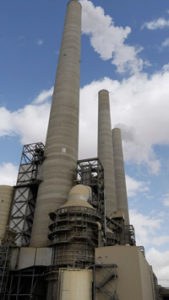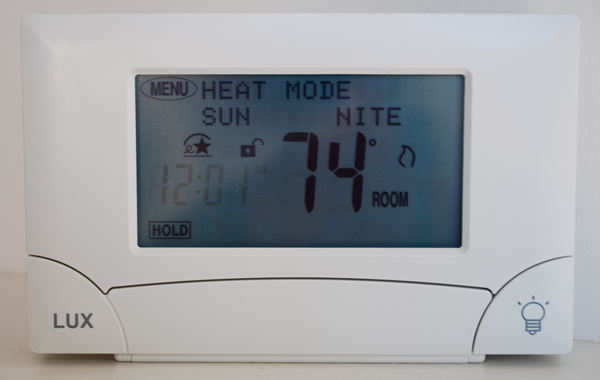Whether we are talking about atmospheric normalization or global warming’s and/or climate change’s causation, “balance” is the word. That’s right, balance.
So in a kind of holistic air-healing sense or maybe more precisely, a holistic air-remedying context, what does being balanced mean exactly?
From physics, we know that if an object exerts a force opposite and equal to that which is being externally exerted upon it, then that object is said to be in a state of equilibrium and consequently that object remains at rest. Furthermore, for soils whose pH levels are lower they are more acidic (less alkaline) and for soils whose pH levels are higher they are less acidic (more alkaline). When a state of equilibrium is reached and pH levels are balanced, the alkalinity zeros out the acidity and vice versa, meaning in terms of pH levels these soils are balanced.
So, how does this relate to air or the atmosphere?
Ever hear of the term “carbon neutral” or “carbon neutrality”? What this implies is that for whatever amount of carbon is entering air or the atmosphere, as long as there is an equal amount of carbon exiting or leaving air or the atmosphere, the air or the atmosphere is carbon neutral.
So, the question becomes: Is carbon neutrality what we should be shooting for?
What we know definitively is that since the introduction of the Industrial Revolution in 1750, Earth’s average surface temperature has risen approximately 1 degree Celsius (1.8 degrees Fahrenheit). If we stay on the track we’re on currently, that is, without any intervention – human or otherwise, the scientific consensus has it that by 2100 the Earth’s average surface temperature will rise to between 3.4 and 6 degrees Celsius (5.2 and 7.8 degrees Fahrenheit).

The bigger question here is: What is the plan to get there?
Backing up
An important consideration to keep in mind is that historically global mean surface temperature has heated up much more rapidly than the rate at which GMST has cooled.
So, any intervening or mitigating strategy involving extraneous means with which to achieve atmospheric greenhouse-gas stabilization, must not only be effective in bringing this so-called air normalization about, but does so, in theory, at least, in relatively short order.
In realistically approaching this situation, we have options. One of these, of course, is carbon capture and storage (CCS) and carbon removal and reuse (CRR). These are atmospheric recovery or air rescue – mitigation – schemes. There are others as well.
What “back-up” means is just what the term implies: to back up or go in reverse.
Think about all of the times we have gotten lost when behind the wheel. What do we do to get out of the jam we’ve gotten ourselves into? We ask for directions if that is an option or we go back the way we came and start over again. As to the latter, why not do the same when it comes to atmospheric greenhouse gas stabilization or atmospheric normalization? This is not difficult. Just back up!
So, does that entail reverting back to practices comparable to those just prior to the introduction of the Industrial Revolution? No. What it means is what brought us to this place air quality/atmosphere degradation-wise, do less of what has contributed to that and, while we’re at it, make more use of the practices, procedures, programs which help improve air quality as well as not cause further air degradation.
Examples

Cutbacks in coal-fired power plant generation – Just about a third of U.S. energy production is by way of coal-fired power plant generation. This is down significantly since the mid-20th century; about a 50 percent reduction.
There are examples of coal-fired power plant shutdowns. One, the Navajo Generating Station in Page, Arizona, profiled in “With Ariz. generator decommissioning come coal-hauler, mine demise,” on Sept. 7, 2019, was due to go offline in December of last year.
Coal-plant closures have come about for one reason or another. There are other more efficient ways of producing electricity. Another has to do with requirements for meeting clean-air standards. Doing such for some plants is cost-prohibitive. Some that are able to can reconfigure, that is to say that they can be converted to burn natural gas, for instance, in place of coal which is cleaner-burning.
Boulevards from highways – You know what they say: Out with the old, in with the new. It’s a familiar refrain.
This topic was covered in the “Being on ‘broad way’ maybe not such an air-smart move after all,” Jun. 25, 2018 Air Quality Matters post.

Long story short, “In the Embarcadero Freeway’s case, it was torn down and replaced by a boulevard at grade or ground level. Moreover, new development in the area took root.”
Similar cases abound. An excellent resource is: “A federal Highways to Boulevards program is the infrastructure project a healthy and equitable America needs,” by Ben Crowther, a Public Square article on the Web site of the Congress for New Urbanism here.
and lastly …
Cities transformed – How one city, Vancouver, British Columbia, Canada, got it right.
When faced with the choice on how to redevelop, Vancouver, Canada chose smartly.
So really briefly, “This truly insightful decision resulted in Vancouver being transformed, evolving from what once could be described as having a “cookie cutter” urban framework or appearance, in effect, following a growth and development style so common in so many other cities across the North American continent, to what can be considered a model with respect to place-making, space utilization, and enhanced travel and transportation efficiencies. A new and improved Vancouver had arrived!” (Source: “Growing pains: Dispersed or concentrated cities: Which is better?”).
Vancouver, B.C. is among good, like company.
These are but three examples. There are indeed more.
Images: Dennis Murphy (upper); U.S. Environmental Protection Agency (middle)
Published by Alan Kandel
